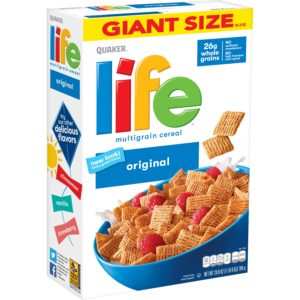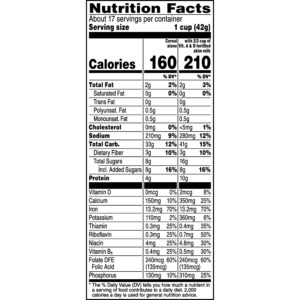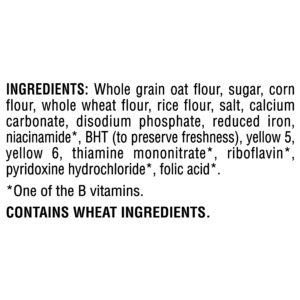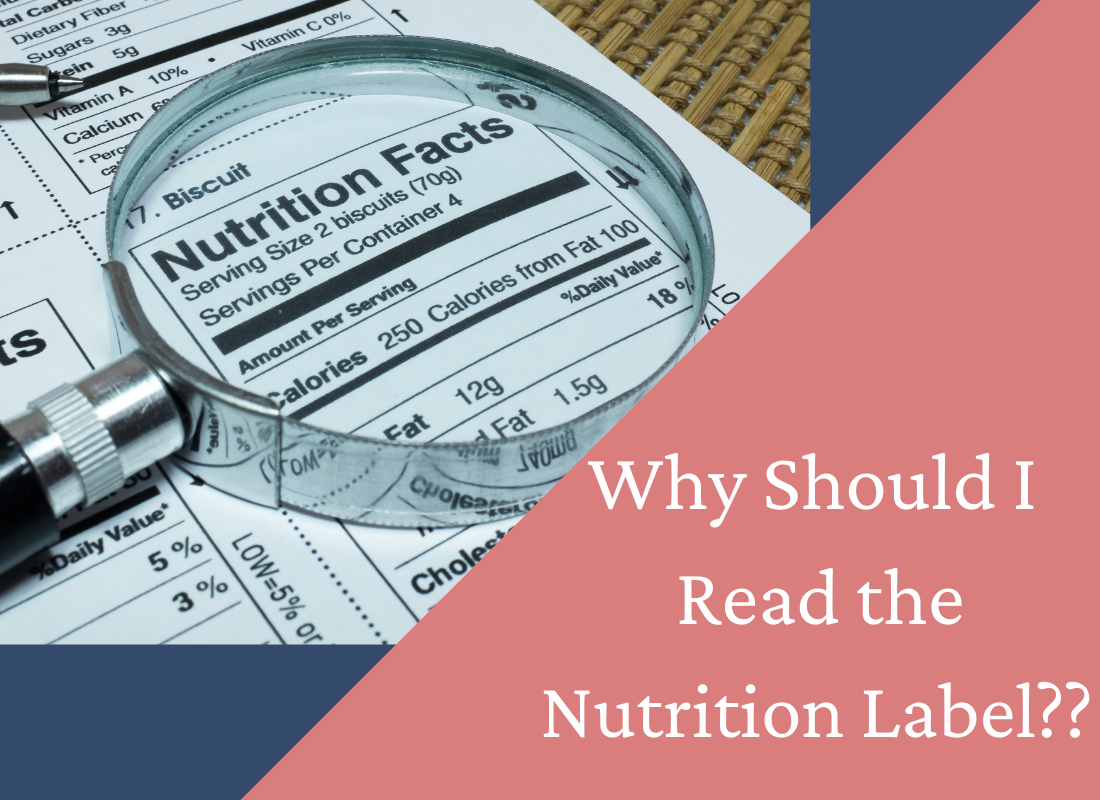Do you really know what you are looking at when you turn that food item over to scan the nutrition label? The food manufacturing industry, although highly regulated, does try to trick consumers into thinking their food is healthier than it actually is. In this article, I am going to help you understand what to look for on nutrition labels and how NOT to get tricked by the ingredient lists.
Why Should I Read the Nutrition Label?
The front of the package is the first thing you see when you are deciding which product to buy. I want to warn you, DO NOT be fooled by the claims on the front of the package. Just because something claims to be “low-fat”, or have “no added sugar”, or “contains whole-grain” does not mean that this product is healthy. This is why it is so important to turn your product over and give the nutrition label a quick scan!
There is no requirement to list that something is “healthy” or “good for you” on the front of the package. Often times, the food items that contain more natural and whole food ingredients don’t even market this on the front of their package. This makes it very deceiving when trying to decide what items to buy (especially when there are so many options). Even more reason why you need to check out that back label! Let’s make sure we’re supporting nutrition and gut health by making informed choices.
What to Look for on Nutrition Label
So, what kinds of things are you looking for when you read the nutrition label? The first thing that many of us look at is how many calories does the item contain. Why is that?! Well, it could be that it’s usually the first item listed in the chart. It could also be that it is common knowledge that to lose weight, we often need to consume less calories.
(This is not always true… it is more important to eat a well-balanced diet along with having a regular exercise routine and cutting calories is not always the answer!)
If you are concerned about calorie intake, then you need to first look at the serving size to determine the number of calories you will be consuming. This is one of the food manufacturers biggest tricks!! The serving size is often deceiving and does not reflect the same amount that we actually consume.
For instance, if you are going to eat a bowl of cereal, the serving size will say 1 cup of cereal. You will need to either measure out exactly 1 cup for this to be accurate. Or go ahead and double what it says on the box as most cereal bowls will hold at least 2 cups. Don’t forget to account for the milk you add to that bowl!
I do not want to pick on any cereal brand in particular, but for the purpose of learning, let’s take a look at this box of Life cereal. Right on the front of the package it claims there are 26 grams of whole grains, NO artificial sweeteners added and NO high fructose corn syrup. Sounds great huh??
At first glance, this box seems pretty healthy! Especially when you are comparing it to the Lucky Charms and Cocoa Puffs that it is sitting next to on the shelf.



But you still need to check out the nutrition label and continue your investigation!
How to Read Ingredient Lists
Did you know that the manufacturer is required to list the food items it contains by quantity from highest to lowest? This means that the first ingredient you see is what the product contains the most of. If the first few items you see on the list are unrecognizable (hard to pronounce or something you have never heard of) or sugar, the item is most likely very processed and not “healthy” for you.
Instead, look for products that contain whole foods in the first few ingredients.
Let’s take a look at the Life cereal box’s ingredient list. The second item on the list is… SUGAR! After reading the front of the box where it states there is no artificial sweeteners added and no high fructose corn syrup… some people may assume this item does not contain sugar.
In fact, this cereal is mostly made up of sugar! Then you add milk (which is also high in sugar) on top of it, and you wonder why you are having a sugar crash and reaching for more coffee by 9AM.
How to Avoid Being Tricked by Sugar
SUGAR… it seems like it is everywhere. There are natural sugars found in many foods. When manufacturers process food, they love to add it in many different forms and with many different names. By doing this, it allows them to be able to list the “healthier” food items first on the list. Hiding the added sugars farther down.
Even if the first few items on the list are whole foods, it is still important to scan how long the ingredient list is. When a product appears to be healthy, it may still be loaded with sugar.
How do you avoid consuming excess sugar? Be on the lookout for the following names of sugar on ingredient lists:
- Any type of syrup (maple syrup, rice syrup, oat syrup, carob syrup, etc)
- Molasses
- Lactose
- Corn sweetener
- Fructose
- Glucose
- Maltose
- Maltodextrin
- Ethyl maltol
- Malt powder
- Dextran
- Barley malt
- Galactose
- Cane juice crystals
- Anything with the word “sugar” in it
There are so many names for sugar, and this is only a small list. It is a list of the most common names and it is important for you to familiarize yourself with these!
In a Nutshell
If you are short on time (because we all live busy lives) the quickest way to “scan” the ingredient label is to first look at the ingredients list. The first 3 items will tell you a lot about the product. Next, look at how long the ingredient list is and try to avoid excess sugar. The least amount of ingredients, the better!
As a rule of thumb, try to stick with products that have less than 2-3 lines of ingredients in them. This is a sure way to know that what you are eating has not been overly processed and will be easier for your body to digest.
Of course, when you are able, it is always best to stick to whole foods that do not require an ingredient list like fresh fruits and veggies.
When you do need to cook with packaged foods, be aware of what you are eating and try your best to sort out the crap from the higher quality food products by using these tips.
If you have any questions about this article, leave them in the comments below. As always, if you are interested in a life changing program to get healthy without taking expensive medications, contact our team today!





